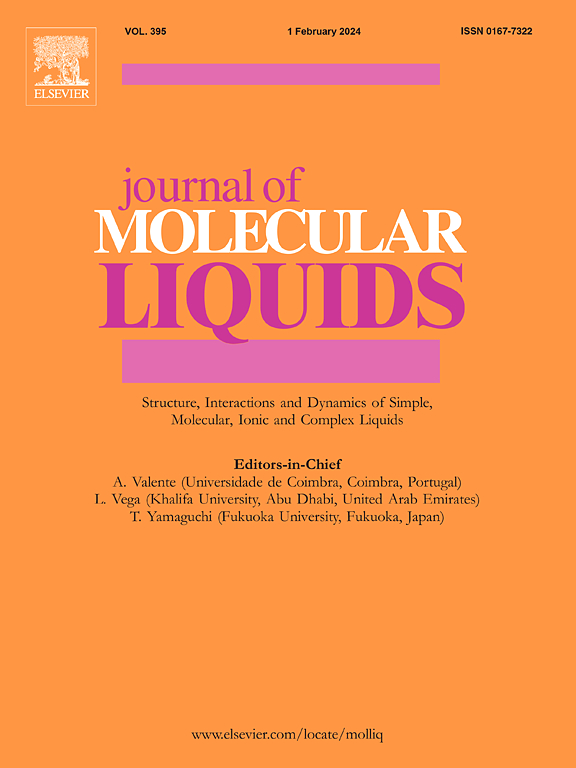Double-Brønsted acidic deep eutectic solvents and their applications as solvents and catalysts in chemical transformations
IF 5.3
2区 化学
Q2 CHEMISTRY, PHYSICAL
引用次数: 0
Abstract
The number of novel Deep Eutectic Solvents (DESs) liquids reported in literature is increasing in recent years thanks to the high number of H-bond capable molecules that possess the features to give stable liquids when mixed in binary systems.
In this work a predictive approach based on the theoretical melting curves crossing points was used to generate a novel class of DESs: double Brønsted-acidic DESs. These liquids were identified as DESs thanks to the comparison of the experimental melting points with the theoretical curves and with ionic conductivity measures. Considering that the catalytic properties of the DESs are correlated with the properties of the forming molecules, the novel DESs were tested as acidic reaction media in model reactions. In the Claisen-Schmidt transformation, the double-acidic DESs gave excellent results. The indole synthesis from alkynes involved for the first time to our knowledge the use of simple Brønsted-acid catalysis without any metal or any other catalyst.

求助全文
约1分钟内获得全文
求助全文
来源期刊

Journal of Molecular Liquids
化学-物理:原子、分子和化学物理
CiteScore
10.30
自引率
16.70%
发文量
2597
审稿时长
78 days
期刊介绍:
The journal includes papers in the following areas:
– Simple organic liquids and mixtures
– Ionic liquids
– Surfactant solutions (including micelles and vesicles) and liquid interfaces
– Colloidal solutions and nanoparticles
– Thermotropic and lyotropic liquid crystals
– Ferrofluids
– Water, aqueous solutions and other hydrogen-bonded liquids
– Lubricants, polymer solutions and melts
– Molten metals and salts
– Phase transitions and critical phenomena in liquids and confined fluids
– Self assembly in complex liquids.– Biomolecules in solution
The emphasis is on the molecular (or microscopic) understanding of particular liquids or liquid systems, especially concerning structure, dynamics and intermolecular forces. The experimental techniques used may include:
– Conventional spectroscopy (mid-IR and far-IR, Raman, NMR, etc.)
– Non-linear optics and time resolved spectroscopy (psec, fsec, asec, ISRS, etc.)
– Light scattering (Rayleigh, Brillouin, PCS, etc.)
– Dielectric relaxation
– X-ray and neutron scattering and diffraction.
Experimental studies, computer simulations (MD or MC) and analytical theory will be considered for publication; papers just reporting experimental results that do not contribute to the understanding of the fundamentals of molecular and ionic liquids will not be accepted. Only papers of a non-routine nature and advancing the field will be considered for publication.
 求助内容:
求助内容: 应助结果提醒方式:
应助结果提醒方式:


